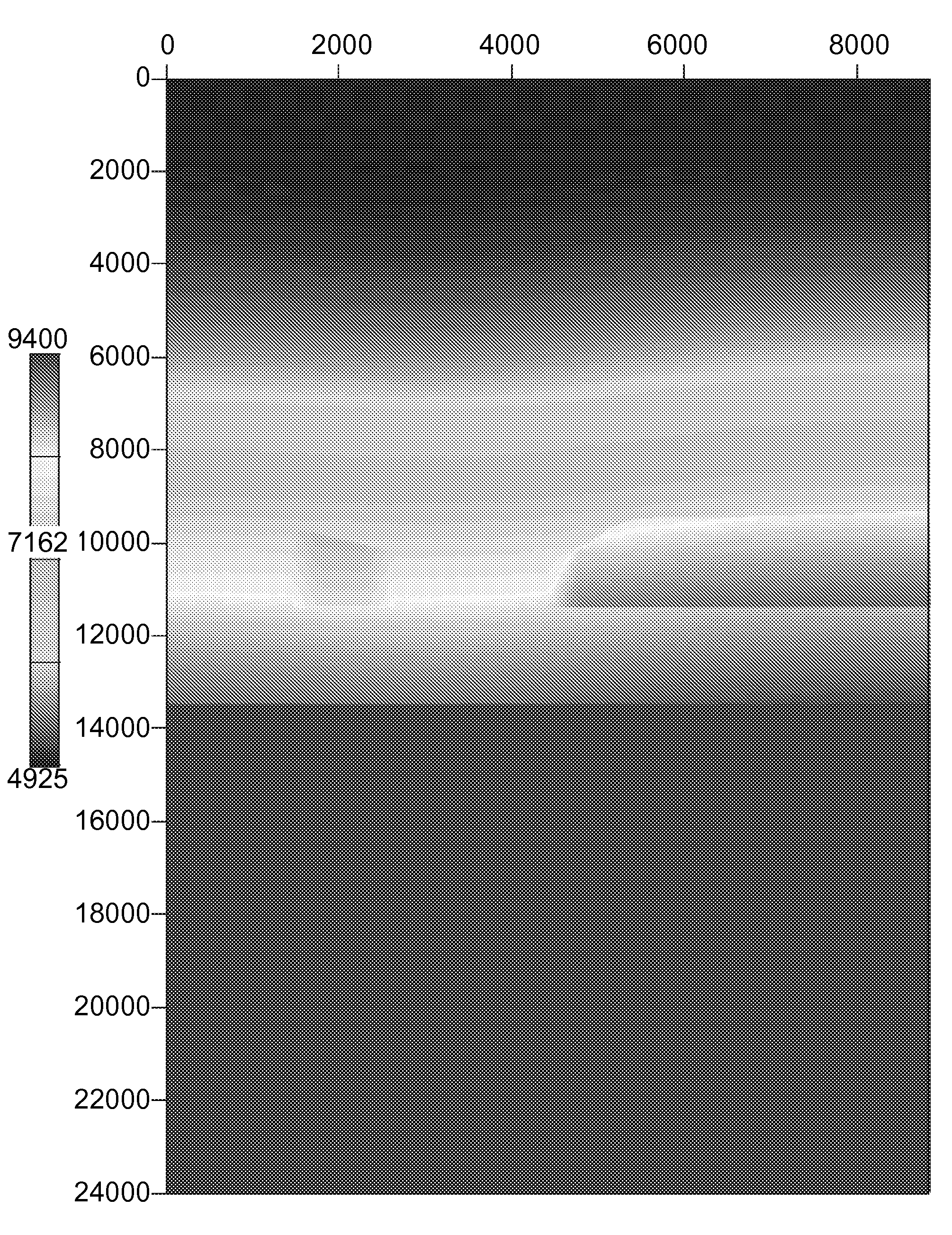Dip guided full waveform inversion
a full waveform and inversion technology, applied in the field of dipguided full waveform inversion, can solve the problems of large amount of processing, difficult to apply this technique, and large size of inversion, so as to reduce the size of inversion and computational cost, mitigate some of the shortcoming of fwi, and reduce the difficulty of applying this technique.
- Summary
- Abstract
- Description
- Claims
- Application Information
AI Technical Summary
Benefits of technology
Problems solved by technology
Method used
Image
Examples
example 1
Synthetic Data Analysis
[0032]To test the DG-FWI, model data were generated. A true model was generated by referencing V(z) to a water bottom, adding a deep flat reflector, low velocity gas zone (LVZ) and a high velocity bar (HVB) anomalies. By definition, the starting model was the true model without two anomalies. The true dataset was “generated” with 148 shots with a spacing of 60 ft. Receiver spacing was at 30 ft with a depth interval of 30 ft. The dominant frequency in this model was 10 Hz, quite high for FWI but is intentionally designed to test the robustness of the DG-FWI. This true model was used to generate synthetic data that represent the features and anomalies as described.
[0033]FIG. 1. shows the true model, the starting model and their difference. The true velocity model FIG. 1A shows features including the water bottom, a low velocity zone (LVZ), a high velocity bar (HVB), and a deeper flat reflector. This simple model was analyzed with an initial velocity model FIG. 1...
example 2
Anaylisis within a Low Velocity Gas Zone
[0039]Although DG-FWI accurately assessed the structures and anomalies within a synthetic dataset a more complex system was analyzed to determine applicability to field data. As shown in FIG. 7A, an initial model was used for this test. For this data, each FWI required approximately 2 hours on a 100-node cluster. This data, made up of ˜1200 shots with a 25 m spacing, was acquired to image a gas cloud anomaly. The receivers were spaced at 12.5 m and a depth of 10 m. Anomalies and features for this dataset were not pre-defined and the model was developed based solely on the DG-FWI analyses. An RTM image with the starting model is overlain with the dip guide tensors that will guide the DG-FWI analyses. Although the samples are regularly selected (20×10), the dip guide provides accurate and relevant guidance for the subsequent FWI inversion, and the underlying data dictate the size, shape and direction of the tensor.
[0040]The updated DG-FWI veloci...
PUM
 Login to View More
Login to View More Abstract
Description
Claims
Application Information
 Login to View More
Login to View More - R&D
- Intellectual Property
- Life Sciences
- Materials
- Tech Scout
- Unparalleled Data Quality
- Higher Quality Content
- 60% Fewer Hallucinations
Browse by: Latest US Patents, China's latest patents, Technical Efficacy Thesaurus, Application Domain, Technology Topic, Popular Technical Reports.
© 2025 PatSnap. All rights reserved.Legal|Privacy policy|Modern Slavery Act Transparency Statement|Sitemap|About US| Contact US: help@patsnap.com



